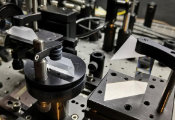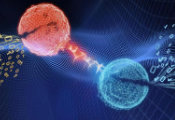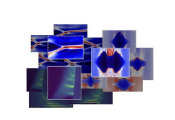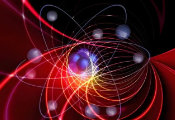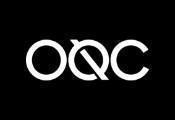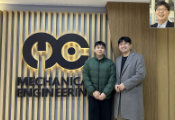Particle Physics and Quantum Simulation Collide in New Proposal
July 8, 2024 -- In nuclear and particle physics, as well as many other areas, the challenges involved in determining the fate of quantum interactions and following the trajectories of particles often hinder research or force scientists to rely heavily on approximations. To counter this, researchers are actively inventing techniques and developing novel computers and simulations that promise to harness the properties of quantum particles to provide a clearer window into the quantum world.
Zohreh Davoudi, an associate professor of physics and Fellow in the Joint Center for Quantum Information and Computer Science (QuICS), is working to ensure that the relevant problems in her fields of nuclear and particle physics don’t get overlooked and are instead poised to reap the benefits when quantum simulations mature.
Davoudi and members of her research group are combining their insights into nuclear and particle physics with the expertise of colleagues that include Joint Quantum Institute (JQI) Fellow Alexey Gorshkov and Ron Belyansky, a former JQI graduate student under Gorshkov and a current postdoctoral associate at the University of Chicago, both of whom are familiar with the theories that quantum technologies are built upon.
In an article published earlier this year in the journal Physical Review Letters, Belyansky, who is the first author of the paper, together with Davoudi, Gorshkov and others, proposed a quantum simulation that might be possible to implement soon. They propose using superconducting circuits to simulate a simplified model of collisions between fundamental particles called quarks and mesons (which are themselves made of quarks and antiquarks).
In the paper, the group presented the simulation method and discussed what insights the simulations might provide about the creation of particles during energetic collisions.
Quantum simulations are still in their infancy. The team’s proposal is an initial effort that simplifies things by avoiding the complexity of three-dimensional reality, and it represents an early step on the long journey toward quantum simulations that can tackle the most realistic fundamental theories that Davoudi and other particle physicists are most eager to explore. The diverse insights of many theorists and experimentalists must come together and build on each other before quantum simulations will be mature enough to tackle challenging problems, like following the evolution of matter after highly energetic collisions.


